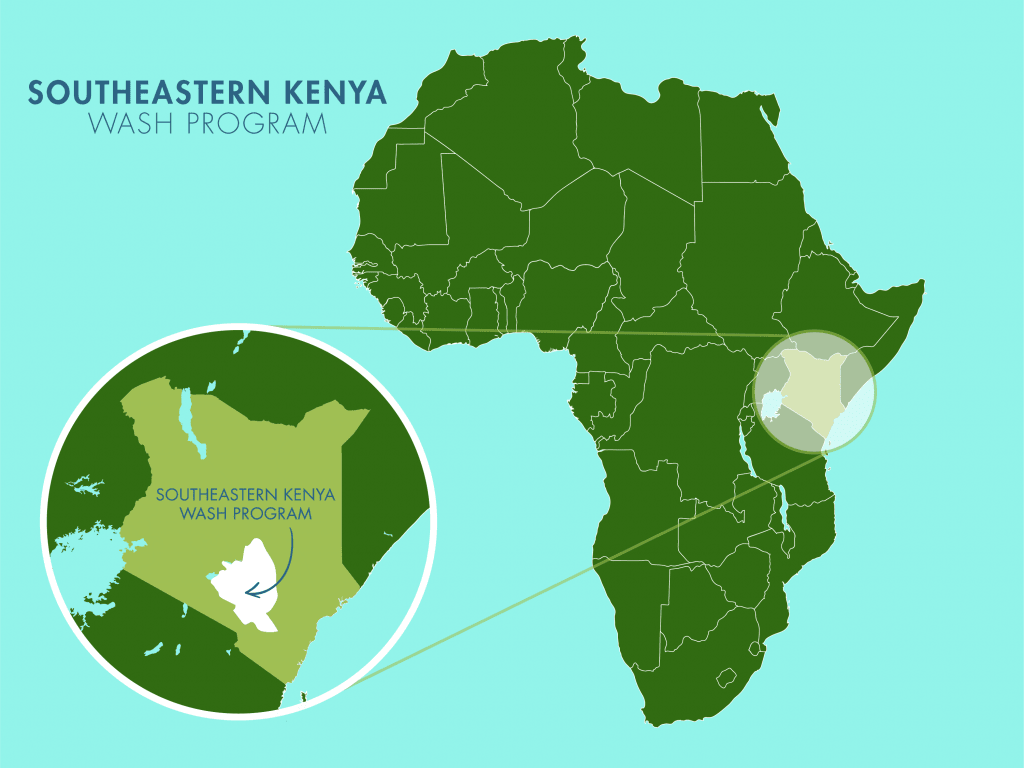Sixteen-year-old Mbuvi has grown up in Kamutekeo West Twone Mbee Community, where water is both precious and painfully scarce for him and the 800 other residents. Every day, he faces the same exhausting routine — walking long distances across rocky, dusty terrain under the scorching sun, all for a few containers of water that are often unsafe to drink.

Mbuvi.
The community’s main water sources are a protected dug well and several scoop holes. While the protected well provides clean water, it is far away — a 30-minute trip on average, sometimes stretching to two hours when queues are long. The scoop holes, although closer, are unsafe and take even more time due to their contamination and tendency to dry up during droughts.
For Mbuvi, the journey is both physically and emotionally draining.
“Fetching water takes so long because the scoop holes and shallow well are located far from our home. The path is rocky and dusty, and the sun is always very hot. Sometimes, when we reach there, we have to wait in line because other people came before us. The scoop holes take time to refill, so we might wait even longer. It’s tiring and takes most of my day," said Mbuvi.

Each trip can consume up to two hours, a time that Mbuvi wishes he could spend in other, more useful ways.
“If I didn’t have to fetch water, I would spend more time in school and helping my parents on the farm. I would also get more time to rest and revise my classwork. I think I’d be able to perform better in my studies and prepare well for my future," he said.
The scoop holes that many families depend on are open and unprotected, allowing contamination from animal waste and debris. Although the water sometimes appears clear, it is actually saline and often has an unpleasant odor.
“I worry about safety because the scoop holes are open and dirty. Animals drink from the same place, and you can even see waste around the area. I’ve been sick a few times with stomach pain after drinking that water. I always worry that I or someone in my family will get really sick," Mbuvi continued.

The nearby scoop hole.
Like most residents, Mbuvi dreams of a clean and reliable water source close to home: “A new water point will give us clean and safe water. We won’t have to risk getting sick anymore, and I won’t have to walk very far in the sun. It will protect my health and help me stay strong so I can focus on school.”
Water scarcity doesn’t just threaten health — it steals opportunities. Children like Mbuvi lose precious study time, often arriving late or too tired to concentrate in class.
"It really affects me. I get to school late, or sometimes I’m too tired to concentrate in class. During exams, if I’ve spent the previous day fetching water, I feel sleepy and weak. My scores are not impressive, and I know it’s because of this," he lamented.

Scooping water into his jerrycan, Mbuvi brings home unsafe water.
When asked how he feels about the endless walks for water, Mbuvi doesn’t hide his frustration: “Honestly, I feel exhausted and sad. Sometimes I don’t even want to go, but I have to. My back and legs hurt after walking that long distance. It feels unfair that I can’t just be a normal student like others in places with water.”
Despite the hardship, Mbuvi remains hopeful. He dreams of becoming a driver one day — a symbol of freedom and movement beyond the limits of his parched village. He shared, “I want to become a driver in [the] future. I love cars and traveling.”
He knows that a new, safe water source could transform not only his life but his entire community’s future. With reliable access to clean water, children could attend school consistently, parents could focus on farming and livestock, and health risks would drop dramatically.
Until then, Mbuvi’s story reflects the daily struggle of hundreds in Kamutekeo West Twone Mbee — a community where every drop of water comes at the cost of time, health, and dreams.
Solving the water crisis in this community will require a multifaceted system that will work together to create a sustainable water source that will serve this community for years to come.
Note: Our proposed water point can only serve 300 people per day. We are working with the community to identify other water solutions that will ensure everyone has access to safe and reliable drinking water.
Steps Toward a Solution
Our technical experts worked with the local community to identify the most effective solution to their water crisis. Together, they decided to construct a protected dug well and sand dam.
Protected Dug Well Near A Sand Dam
Once a sand dam is installed and has time to mature by gathering sand and silt, groundwater increases significantly in the entire area surrounding the project. This provides a reliable source of groundwater that wasn’t possible before. As a result, wells can be constructed to take advantage of the water stored and filtered in the collected sand.
During the construction of the protected dug well, we will build a platform for the well and attach a hand pump. The community will gain a safe, enclosed water source capable of providing approximately five gallons of water per minute.
This protected dug well will be connected to a sand dam to obtain water.
Community Education & Ownership
Hygiene and sanitation training are integral to our water projects. Training is tailored to each community's specific needs and includes key topics such as proper water handling, improved hygiene practices, disease transmission prevention, and care of the new water point. Safe water and improved hygiene habits foster a healthier future for everyone in the community.
Encouraged and supported by our team's guidance, the community elects a water user committee representative of its diverse members. This committee assumes responsibility for maintaining the water point, organizing community efforts, and gathering fees to ensure its upkeep.

 Protected Dug Well
Protected Dug Well
 Rehabilitation Project
Rehabilitation Project


















